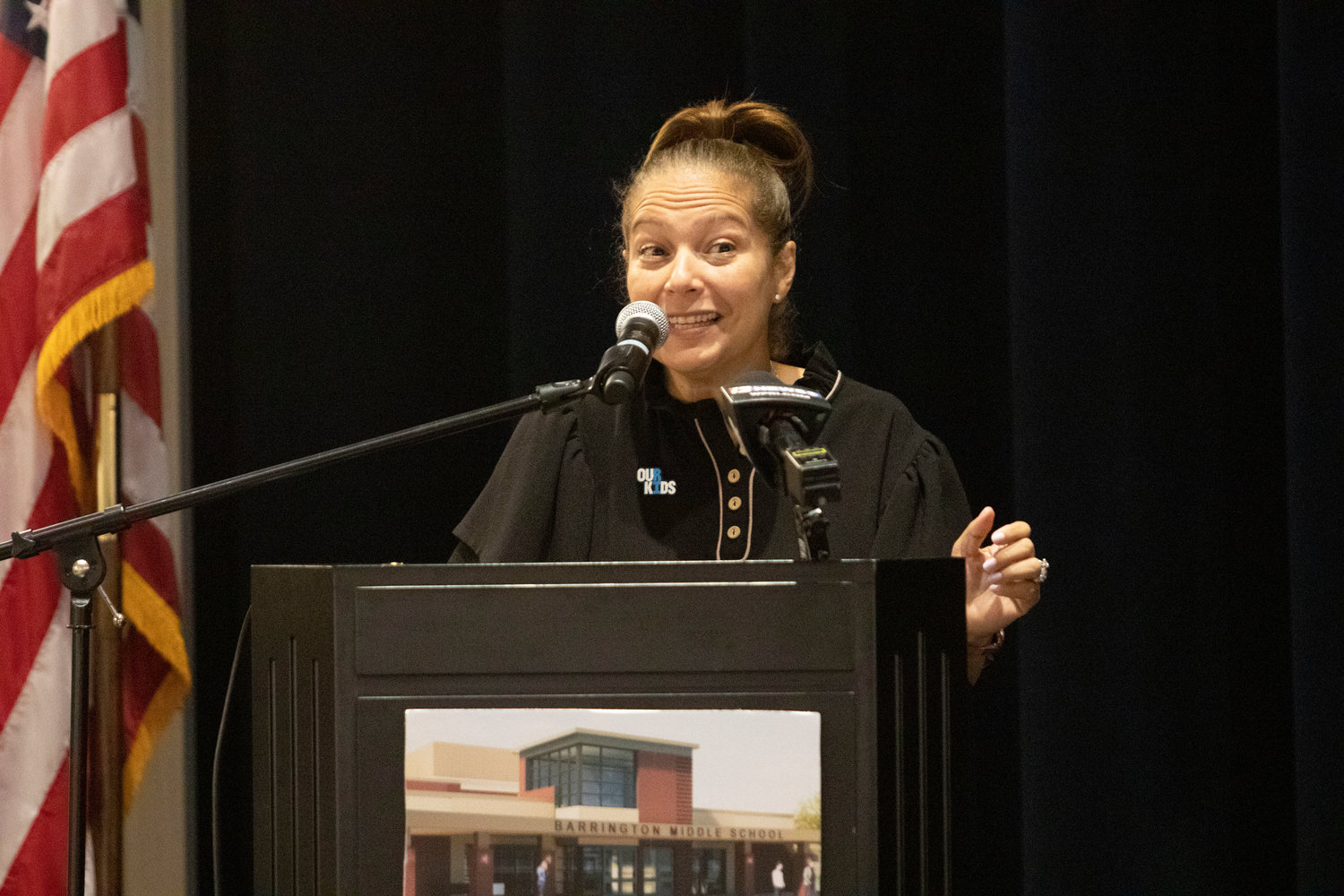Barrington Middle School earns district $1.5 million
District celebrates national Green Ribbon
The Commissioner of Education in Rhode Island stopped by Barrington Middle School last week to help celebrate a special Green Ribbon awarded to the school.
Commissioner Angélica …
This item is available in full to subscribers.
Please log in to continue |
Register to post eventsIf you'd like to post an event to our calendar, you can create a free account by clicking here. Note that free accounts do not have access to our subscriber-only content. |
Day pass subscribers
Are you a day pass subscriber who needs to log in? Click here to continue.
Barrington Middle School earns district $1.5 million
District celebrates national Green Ribbon
The Commissioner of Education in Rhode Island stopped by Barrington Middle School last week to help celebrate a special Green Ribbon awarded to the school.
Commissioner Angélica Infante-Green joined Barrington Middle School students, staff members, district administrators, members of the school committee and others for a tour of the building and special ceremony. The Green Ribbon celebrates the efforts to reduce environmental impacts; improve the health and wellness of students and staff; and provide effective sustainability education.
The ceremony also served as a perfect opportunity to celebrate a $1.5 million energy bonus for the district due to the middle school’s energy efficiency.
Barrington Middle School is one of only 27 school districts in the country honored this year with a national Green Ribbon award.
Barrington Middle School was one of Rhode Island's first new construction projects to receive additional housing aid bonuses. BMS participates in the Barrington School Department's plan to manage energy use through the EPA Energy Star Portfolio Manager — the middle school achieves a 40 percent energy savings above the International Energy Efficiency Certificate 2009 baseline requirements.
Schools, districts, colleges, and universities do not apply for the award to U.S. Department of Education, but instead to their state education authorities.
The award is a tool to encourage state education agencies, stakeholders and higher education officials to consider matters of facilities, health, and environment comprehensively and in coordination with state health, environment, and energy agency counterparts. Unique about the award is that, in order to be selected for federal recognition, schools, districts and postsecondary institutions must be demonstrating progress in all three of the pillars — reducing environmental impacts; improving the health and wellness of students and staff; and providing effective sustainability education.











